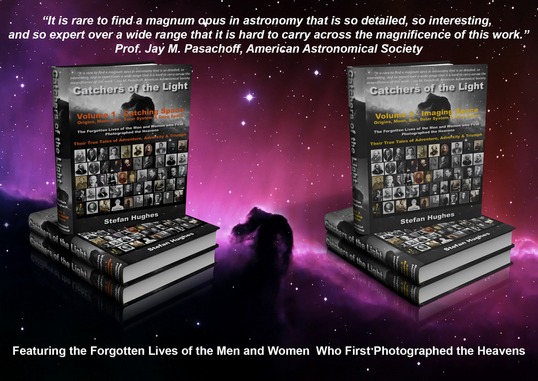'The Lawyer'

Born: 25th November 1816, Morrisania, Bronx, New York, USA
Died: 30th May 1892, ‘Tranquility’, Allamuchy, Warren, New Jersey, USA
Lewis Morris Rutherfurd although coming from an unlikely legal background and having received no formal scientific education, made contributions to Astronomical Spectroscopy that were truly ground breaking; and which were the envy of many professional scientists. He was also the first person to build a telescope suitable for photographic use only. With this instrument he took photographs of the Moon, which were for over twenty years unequalled in their quality.
Lewis Morris Rutherfurd (1816-1892) was at first sight an unlikely candidate for a great amateur scientist and even less so as one of the pioneers of Astrophotography, yet that is exactly what he became. Born into a family whose male members had been lawyers for as long as America had been a Nation, it seemed that he too would be another Rutherfurd destined for a life at the Bar.
Then something happened which changed his life – he found science. He realized much to the horror of his parents, that micrometers, telescopes and diffraction gratings were infinitely more interesting than serving affidavits and drawing up deeds.
Sometime around 1850 he broke the family tradition which had lasted for three generations; and gave up the law to devote all of his effort, time and money to science. It was not long before he and others realized that not only did he enjoy it but he was also rather good at it.
In the January of 1863 Rutherfurd published a paper in the American Journal of Science on the spectra of the Moon, Planets and Stars. This was the first paper published on the subject of spectral analysis since that of Robert Bunsen and Gustav Kirchhoff, written some four years previously. It included the very first attempt at classifying stars based on their spectra.
The paper was a milestone in the new science of Astrophysics, and greatly extended the work of Joseph Von Fraunhofer done nearly half a century earlier; and even went beyond the more recent findings of Kirchhoff and Bunsen. Rutherfurd’s stellar classification work was later expanded upon by the Jesuit priest Pietro Angelo Secchi in 1867, and further advanced by others including Williamina Fleming, Antonia Maury and Annie Jump Cannon during the 1890s.
A year later In 1864, he made one of the greatest technical advances in the entire history of Astrophotography when he succeeded in constructing an 11.25-inch objective lens suitable for photographic use. This event marked the birth of the ‘Photographic Refractor’ or Astrograph.
With his new Astrograph the very first of its kind, Rutherfurd was able to take images of the Moon whose quality was not to be surpassed for over twenty years; but more importantly for Deep Space Astrophotography – he was able to image stars as faint as the ninth magnitude.
In the 1860s, Rutherfurd took a series of Photographs of a number of the most well known open clusters in the heavens. This was the first time that this had been done and was in fact the logical continuation of the work done on Stellar Photography by the Bonds of Harvard and the Boston Photographers, John Adams Whipple and James Wallace Black during the 1850s.
However, the work of Rutherfurd in which he was later assisted by Benjamin Apthorp Gould (1824-1896), was particularly important in that not only the images of the stars were captured on the Photographic Plate, but their positions in the sky were also measured directly from the plates. This was the beginning of Photographic Astrometry.
Let us now tell the story of Lewis Morris Rutherfurd, the onetime lawyer who changed his life by catching the light of the moon, planets and stars.
To read more on his life and work read the eBook chapter on Lewis Morris Rutherfurd or buy the Book 'Catchers of the Light'.

The Moon at 'First Quarter', Lewis Morris Rutherfurd, 4th of March 1865

Buy the eBook or Printed Book at the 'Catchers of the Light' shop.